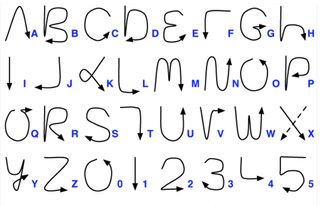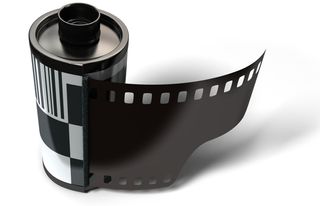10 Terrible Tech Frustrations My Toddler Will Never Have
When I was growing up, my parents would tell me about all the ancient technologies they had to use in their youth. Whether it was a car with a manual choke, a phone that required you to ask an operator to connect you, or a record player with a hand crank, mom and dad experienced a ton of tech frustrations I would never know.
As my 1-year-old upgrades his speech capability, I expect to tell him about these 10 awesome tech frustrations that he’ll never experience. I hope he feels sorry for me, at least a little bit.

Glacially Slow Dial-Up Internet
I’ve been using cable Internet since 1999, but I’ll never forget the excitement of dial-up Internet. Barring a broadband apocalypse, my son will be able to count on boringly consistent connectivity throughout his life. Dial- up was like a box of chocolates; you never knew what you were going to get. Listening to the modem dial was like watching a croupier spin the roulette wheel. I’d hold my breath as it punched the final number. Would I get a busy signal, or would it just keep ringing until I hit the cancel button and tried again? Even when my ISP’s modem picked up, I was on pins and needles for at least 30 seconds while I heard the familiar “boing, boing, bing” of its handshaking process. In the end, I could come out a winner with a speedy 56K connection or take the penny prize with a 14.4 Kbps rate that took 10 minutes to download a single photo.

Flimsy Floppy Disks
These days, you have to work pretty hard to lose your work. Everything my son writes, from his first scribbles to his college term papers, will be preserved in the cloud for his great- grandchildren to see. When I was growing up, we had flimsy 5.25-inch floppy disks to save our data. Unlike today’s flash drives that survive 30 minutes under water, these fallible floppies could fall victim to magnets, heat or even overuse. Even better, it took a good very long time to save a document, making you less likely to write to disk while you worked.
More: 7 Ways to Reboot the Crashing PC Market

Germ-Ridden Pay Phones
Throughout his life, my son will never be out of pocket, because he’ll always have a phone or some communication device with him. However, when I was growing up, the only way to reach out and touch someone from the road was to use a payphone. These days, you’ll have an easier time finding a drive-in movie theater than a working payphone -- and for good reason. The ear pieces on these contagion kiosks were about as sanitary as a public toilet seat that hadn’t been cleaned in years. Even worse, I never had the right amount of change, so I had to use a pricey calling card. Remember those?
More: The 10 Hottest Smartphones Available Now
Stay in the know with Laptop Mag
Get our in-depth reviews, helpful tips, great deals, and the biggest news stories delivered to your inbox.

Ambiguous Pager Messages
By the time my son is in kindergarten, he’ll probably be wearing a headset that beams full emails into his retina while he walks around. But his father was excited to get an alpha numeric pager that buzzed with a caller’s phone number. Unfortunately, when you received a page, you often didn’t know whose number it was and what that person wanted until you returned the call. I can’t tell you how many times I ran to the nearest payphone just to call back telemarketers or strangers who paged the wrong number.
More: 10 Best Smartphones of All TIme

Renting and Rewinding a VHS Tape
When I sit down on the couch with my son and show him all my favorite movies, they’ll be streaming from the cloud right to our tablet or TV. So he’ll spray milk from his nose when I tell him about how we used to rent VHS tapes from a store. When you think about it, every single aspect of the video- rental process was an exercise in frustration. First, you had to drive to the store and hope it still had available copies of the movie you wanted, but more often than not, you’d come for "Pearl Harbor" and settle for "Pootie Tang." You then had 24 hours to watch the film and bring it back fully rewound or risk painful penalties. I’ll never forget standing in front of my VCR rooting for it to rewind the tape more quickly so I could speed out to Blockbuster in an ice storm and get it there by 11:59 p.m.
More: 10 Future-Proof Gadgets You'll Still Love Next Year

Dot Matrix Printing
If and when my son actually needs to output something to paper, the inkjet will print it in full color on a glossy piece of paper within a minute or so. If he needs more paper, he’ll just load regular 8.5- x 11-inch pages into a tray and be done. He’ll never have the same sense of satisfaction I experienced after finally aligning the holes on my ream of paper with the sprockets on my dot matrix printer and waiting 20 minutes for it to print 10 pages of black-and-white text. The printing process was so slow and painful that teenage girls could use "I need to print tonight" as an excuse to get out of a date instead of classics like "I need to dry my hair" or "something suddenly came up."
More: 15 Technologies My Newborn Son Won't Use

Writing in Palm Graffiti
Today’s best software is like a pair of comfortable shoes; it adapts to the user’s existing preferences over time. My son’s first computer, phone and tablet will undoubtedly learn from him, predicting the next word he’ll type or song he’ll listen to, based on his previous activity. Growing up in a world where personalization is king, my kid will be surprised to hear that there was once a device that forced you to learn an entirely new alphabet just to enter text. An entire generation of PalmOS PDAs required you to write in Graffiti, a synthetic alphabet that was designed to make it easy for the device to read your scribbles.
More: 10 Biggest BlackBerry 10 Annoyances

Dithered Web Graphics
If my son sees a picture that has a limited color pallette, it’ll be on Instagram. Back when the Web was new, however, a lot of video cards and color monitors could show only 256 different colors (8-bit color) on screen at once. With 8-bit color, photos appeared grainy because the computer had to use dithering technology to approximate more colors than it could actually show at once. Even the desktop wallpaper and icons in Windows looked pixilated when used in 8-bit color mode. When I finally got a 16-bit video card, the entire Internet looked different.
More: What Were They Thinking? 6 Most Senseless Gadgets

Adjusting the Rabbit Ears on Your TV
Whether it’s a streaming video from the Internet or an HD channel on cable TV, the videos my son watches all appear at the press of a button. On the rare occasion that he has to wait for buffering or the picture freezes, there’s not a lot anyone can do about it. When I tell him that I grew up poking and prodding the rabbit-ear antennas on top of the TV just to get a decent picture, he’ll throw his sippy cup across the room. Unfortunately, for decades before cable and digital TV, everyone had to get up from the couch and periodically fiddle with the TV antennas, because the picture would suddenly get wonky. A whole generation of children were charged with this task.
More: 10 Best TV Apps

Developing a Photo
If my son wants to take a picture of something, all he needs to do is point his smartphone, tablet, digital camera or webcam at the object and click a button. In about a second, he’ll have a completed digital image he can edit, print or share with the world. When his dad was growing up, most pictures were taken on film cameras with two dozen shots per roll and no ability to see them until they were developed. Sometimes, it would be weeks or months before you finished a roll and had it developed. Even Polaroid pictures took several minutes to appear. By that time, if someone had red eye or was looking away in a shot, it was too late to capture another image.
